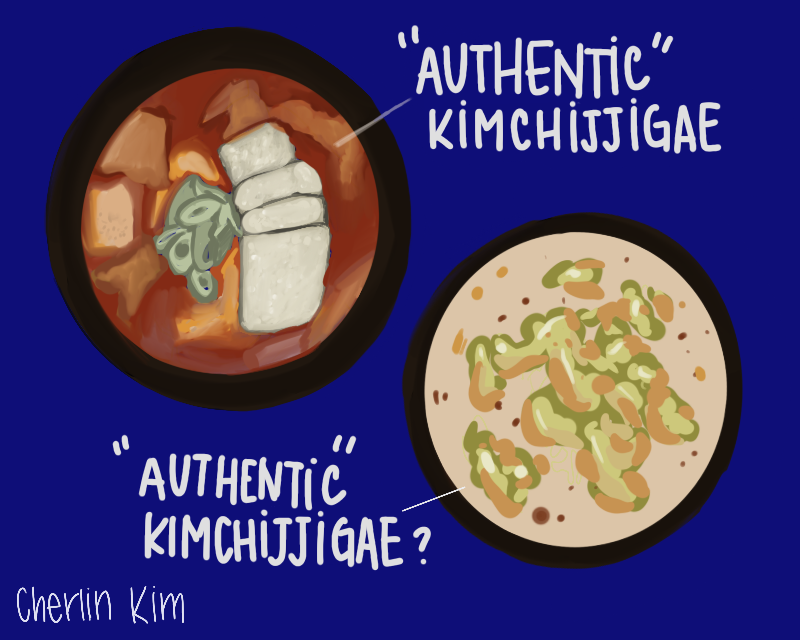How authentic is your ‘authentic’ Korean food?
As you pass food trucks and restaurants in Koreatown in the US, you see neon signs flashing “Authentic Korean Food” to lure immigrants longing for a taste of home and intrigued non-Koreans who want an authentic Korean experience.
Intrigued yourself, you enter the restaurant and order kimchijjigae, a traditional Korean stew with well-fermented kimchi, savory spices, anchovies, and tender beef. As you sit down with your so-called “authentic” Korean dish, you excitedly take a big spoonful of scalding rice and stew to experience the flavor of… nothing?
The bland taste of raw cabbage and MSG-flavored water—a sad attempt at an authentic taste of Korea.
But, for starters, how can we define the authenticity behind Korean foods?
While some may only consider Korean cuisine authentic when adhering to century-old recipes, we should ultimately stretch the boundaries to deem all dishes made and enjoyed by Koreans authentic.
Granted, when asked about authentic Korean foods, even native Koreans will envision elderly women in the countryside who store fermented cabbage and soybeans in clay pots to be then buried in the ground over the wintertime.
However, what this image portrays is the making of traditional foods in particular—not authentic Korean cuisine as a whole. In fact, traditional foods simply represent dishes made with cultural recipes which have been preserved through generations.
Although all traditional Korean foods are authentic (as they are made and enjoyed by Koreans), authenticity should encompass even the foods mass-produced in factories and delivered to supermarket refrigerators.
Take Bibigo: The no.1 food company in Korea which mass produces Korean dishes, such as garlic crunchy chicken and seaweed soup, and sauces like gochujang and dwaenjang. Just because these meals are pre-made and often frozen should not cut down on their authenticity.
Behind Bibigo’s food recipes are expert Korean chefs like Doyun Kim. Over the years, Kim has created famous Bibigo sauces including “GOTCHU,” which was produced through a fermentation process unique to Korea. However, instead of waiting months on end for the sauces to traditionally ferment in clay pots, he instead took advantage of modern, cold storage technology to speed up the fermentation process.
Although the fermentation process has been altered from ancient Korean times, the taste and quality of Bibigo’s foods have been preserved.
As a result, Bibigo has won the hearts of residential South Koreans for their meals’ time efficiency and delicious tastes, soon garnering love from even customers internationally. Thus, mass-produced companies like Bibigo must also be considered authentic foods, as they are Korean foods produced and loved by Koreans.
Alongside mass-produced Korean foods, artificial foods must also fall into the sphere of authentic Korean meals.
Sweet goods including the ORION Choco Pie, My Chew Candies, and Pepero are all Korean-made snacks enjoyed by many South Koreans. Likewise, more savory treats like Turtle Chips and Honey Butter Chips are ranked within the top 10 of best-sold snacks in Korea.
Although such foods are not hearty, nutritious meals, nor made with traditional recipes, they are still considered authentic to South Korea.
As such, to consider Korean meals only authentic when made in its most ancient and traditional form is neglecting the array of dishes and snacks that shape South Korean culture.
Even if a dish does not overwhelm you with the pungent smell of fermented beans and cabbage nor the bitter taste of anchovies, you may be experiencing an authentic taste of Korea, nonetheless.

Cherlin Kim is a senior managing editor for Tiger Times. She is interested in public speaking, literature, and learning about different cultures. She enjoys...

